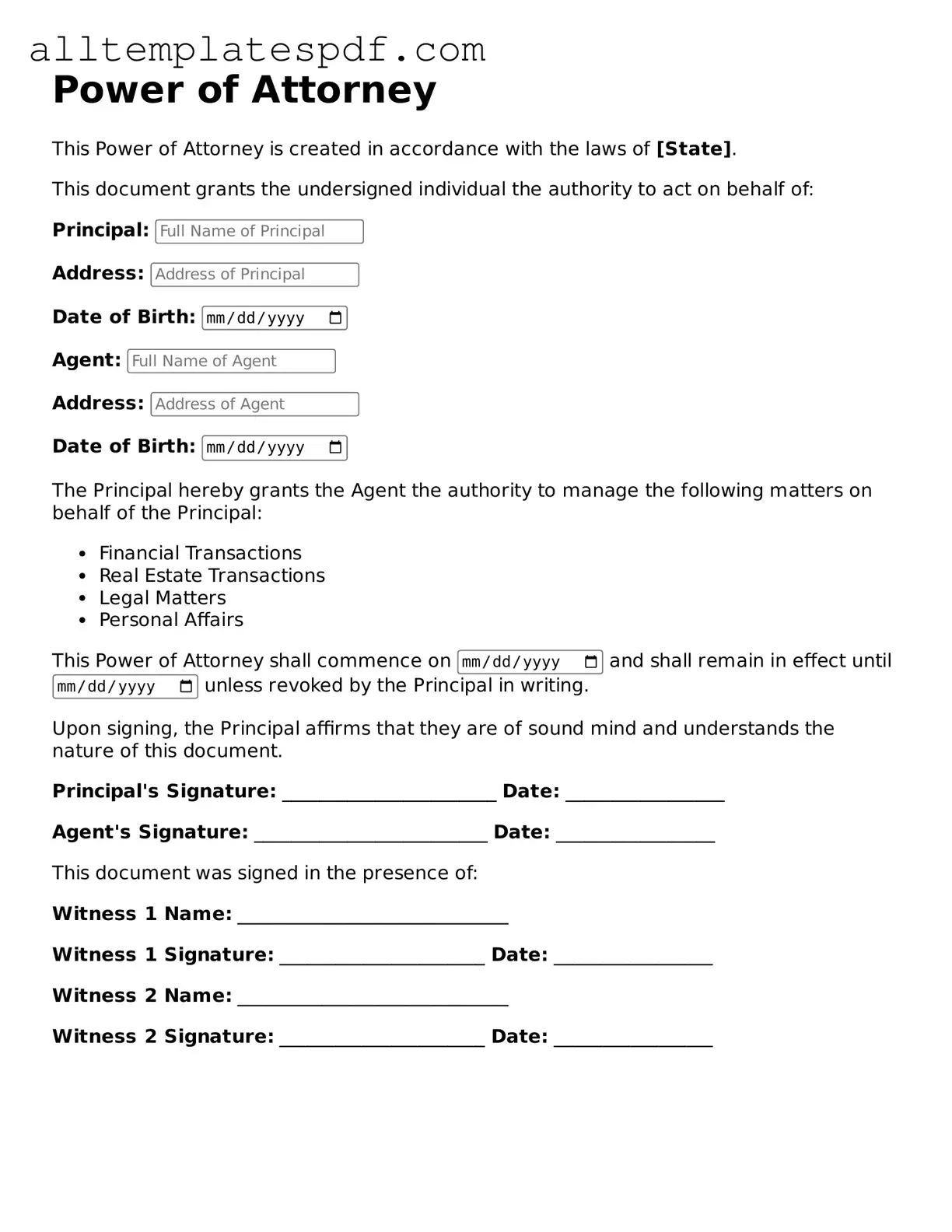Filling out a Power of Attorney (POA) form can be a straightforward process, but several common mistakes can lead to complications. Understanding these pitfalls can help ensure that the document serves its intended purpose effectively.
One frequent mistake is not specifying the powers granted. Individuals often leave the section detailing specific powers blank or too vague. This can lead to confusion about what the agent is allowed to do. Clearly outlining the powers ensures that the agent knows their responsibilities and limits.
Another error involves failing to date the document. A POA must be dated to be valid. Without a date, there may be questions about when the authority was granted, potentially leading to disputes or delays in decision-making.
Many people also overlook the importance of not having witnesses or notarization. Depending on state laws, a POA may require the signatures of witnesses or a notary public. Neglecting this step can render the document invalid, leaving the principal's wishes unfulfilled.
Additionally, not reviewing state-specific requirements can create issues. Each state has its own regulations regarding POA forms. Failing to adhere to these can result in a document that does not hold up legally. It is essential to consult state guidelines to ensure compliance.
Another common mistake is not communicating with the agent before completing the form. It is crucial to discuss the responsibilities and expectations with the chosen agent. Misunderstandings can arise if the agent is unaware of the principal's wishes or the scope of their authority.
People sometimes forget to update the POA when circumstances change. Life events such as marriage, divorce, or the death of the agent can necessitate changes to the document. Regularly reviewing and updating the POA ensures that it reflects current intentions and conditions.
Finally, not keeping copies of the document can lead to complications. It is important to provide copies to the agent, relevant family members, and any institutions that may need to reference it. This helps prevent confusion and ensures that the agent can act when necessary.
